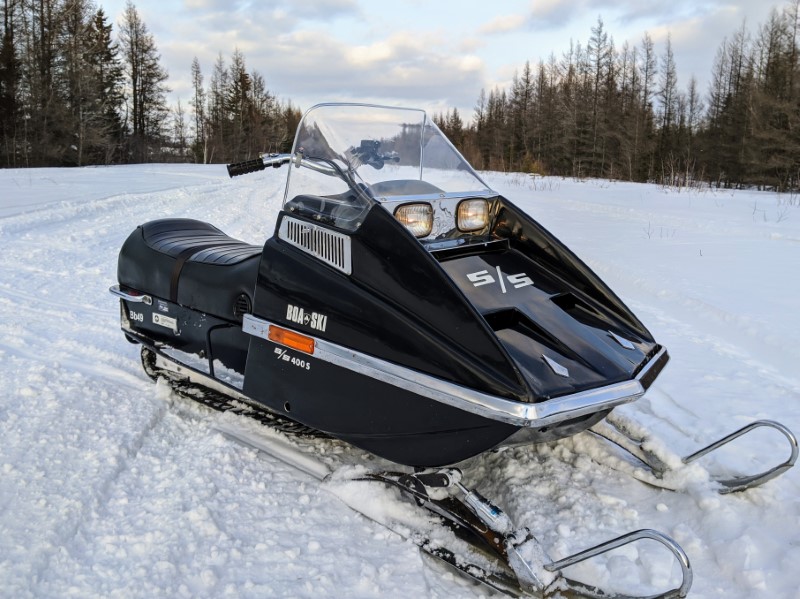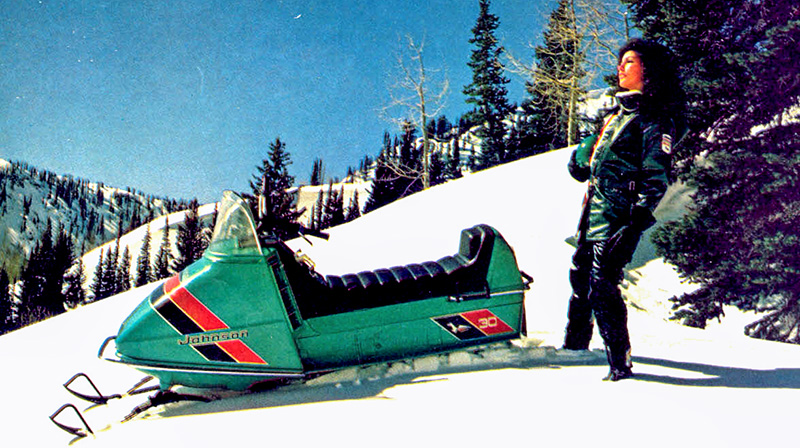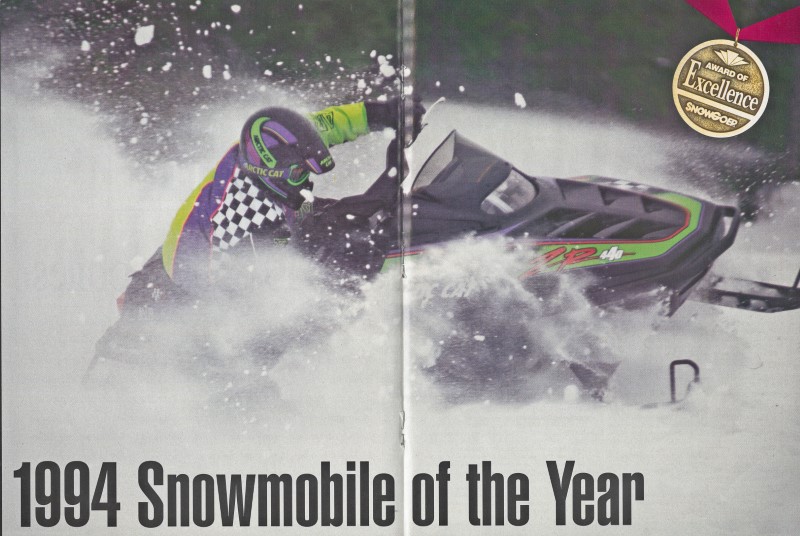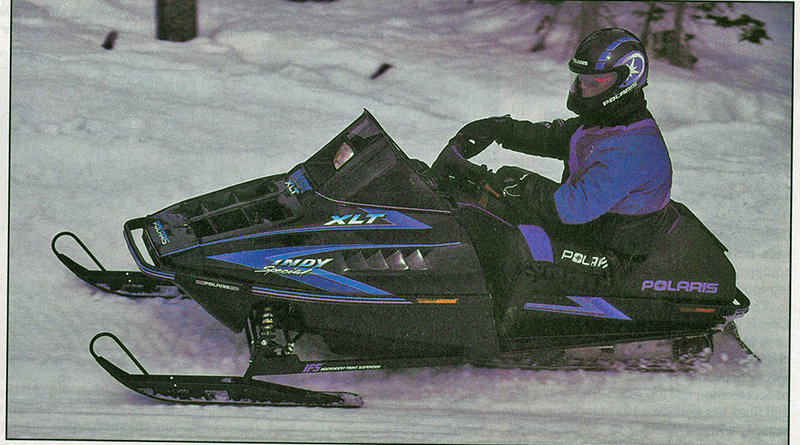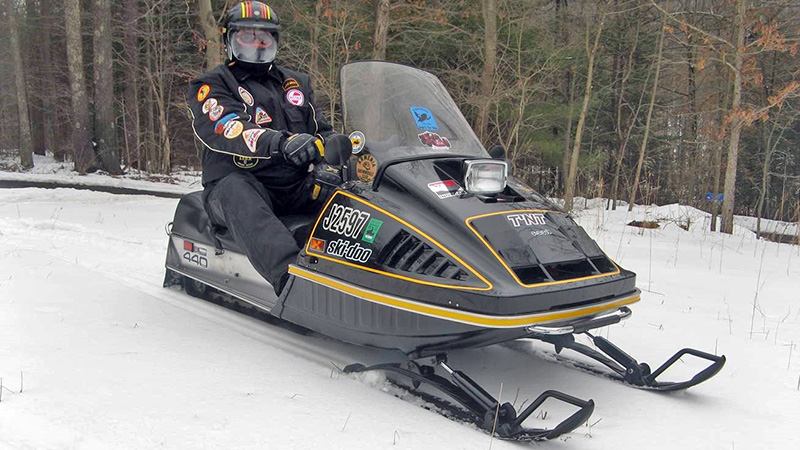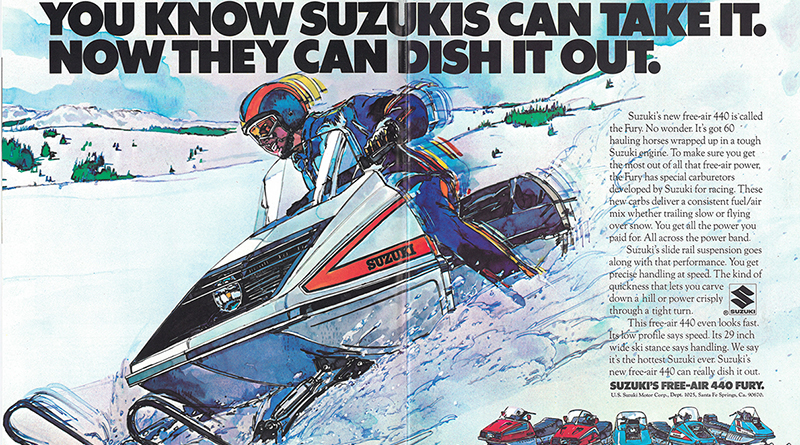
Right from the beginning, when established in 1968 with its first sleds designed to hit the market for model year 1970, Northway began to build a reputation for performance as well as “outside-the-box” thinking. Early features included completely enclosed engine compartments with automotive style rear-hinged hoods, a removable one-gallon reserve gas tank and the optional “Pioneer” high seat that provided significant open storage between the seat cushion and the tunnel. After testing the 1972 models, Snow Goer called Northway “the sleeper of the industry.”
By 1974, snowmobile manufacturers were under a lot of pressure from rapidly raising gas prices, a stagnant economy and excess inventory across the industry. Northway was one of many companies that was still selling essentially the same machine that it had in 1972. But there were some very interesting upgrades and changes; particularly on the D (for Deluxe) versions of the Interceptor trail performance models. The number 15 or 18 on Northway models referred to the track width in inches.
Modifications For ’74
Some of the changes on the 1974 Interceptors, like the substitution of St. Lawrence clutches for the previously used Salsbury, were the result of normal snowmobile component market activities. And others, like the use of silver on the Interceptor Deluxe models instead of Northway’s signature lime green or candy apple red, were simply appearance moves for marketing purposes. But some of the updates were the result of forward-thinking.
For instance, ’74 Northways were some of the first to offer height options for its “pop-out easy change” windshields.
Yet other changes were very important, like the all-new rear suspension introduced on the Interceptor Deluxe models. Most Northways still used bogie wheels, but the company dropped a slide rail option in favor or its new Super Cushion Ride (SCR) suspension. Similar to the earlier Scorpion Para-Rail and Roll-O-Flex Super-Flexion designs, the SCR mounted wheels on a rack of parallel rails with torsion springs and a single hydraulic shock. Using fewer wheels than the Para-Rail, the SCR was claimed to offer “the smoothest ride in the snowmobile industry.” It worked OK in a straight line at slower speeds, but otherwise it was a disaster. “Handling was worse than we got from bogie wheels,” stated the 1974 Popular Science Snowmobile Handbook. “To our test riders, it seemed difficult to turn and felt unstable in open field running.”
The D models were also equipped with the innovative FasTrac from Stevens Molded Products Company in Easthampton, Massachusetts. Composed of multiple segments of steel-reinforced DuPont Hytrel polyurethane that were linked together with spring steel connecting rods, the FasTrac allowed replacement of damaged sections instead of replacing the entire track. The track was also very light and didn’t stretch. Recognizing that one of the shortcomings of polyurethane as a track material was poor traction on ice, Stevens fitted the FasTrac with 96 tungsten carbide mini-studs on top of the track lugs, the first appearance of this traction concept in the snowmobile industry. This made the Northway Interceptor Deluxe one of the very first sleds to be studded from the factory.
Fast, And Maybe Flammable
Magazine testers generally agreed that the Interceptor 15 440D was a hot sled worthy of consideration by performance-oriented riders.

Le Magazine de L’Auto-Neige (“The Snowmobile Magazine”) summarized that, “The Northway Interceptor 440 is a very, very fast machine reserved for experienced riders accustomed to big engines mounted in the center of the chassis.”
The Popular Science Snowmobile Handbook reported that, “it is a fast accelerating sled,” but also pointed out that it could get hot in another way: “Fueling requires you to open the hood first, and there’s a possibility that spilled fuel could come in contact with the muffler, which we feel could be potentially hazardous.”
Weighed down by industry-wide issues, Northway Snowmobiles Ltd. went bankrupt in the summer of 1973 while the ’74 machines were under construction, and the bank locked the doors at the end of August. Only about
3,000 of the ’74 Northways had been completed, roughly half the company’s production at its peak in 1972. So the 1974 model year became Northway inventory clearance with the help of a Wisconsin-based liquidator.
Remaining assets were purchased by Barrie, Ontario, dealer Lewis Crowe, which continued to build and sell roughly 400 more units with Kohler power through 1979 when a fire wiped out what little was left of Northway.
Although late to the party, Northway had proved to be more of an innovator than most companies in the business, and it outlasted most of them, too. But despite the innovations, Northway was just one more company that was too small and insufficiently financed to weather the great manufacturer shakeout of the 1970s.
Editor’s Note: Every Snow Goer issue includes in-depth sled reports and comparisons, aftermarket gear and accessories reviews, riding destination articles, do-it-yourself repair information, snowmobile technology and more. Subscribe to Snow Goer now to receive print and/or digital issues.

